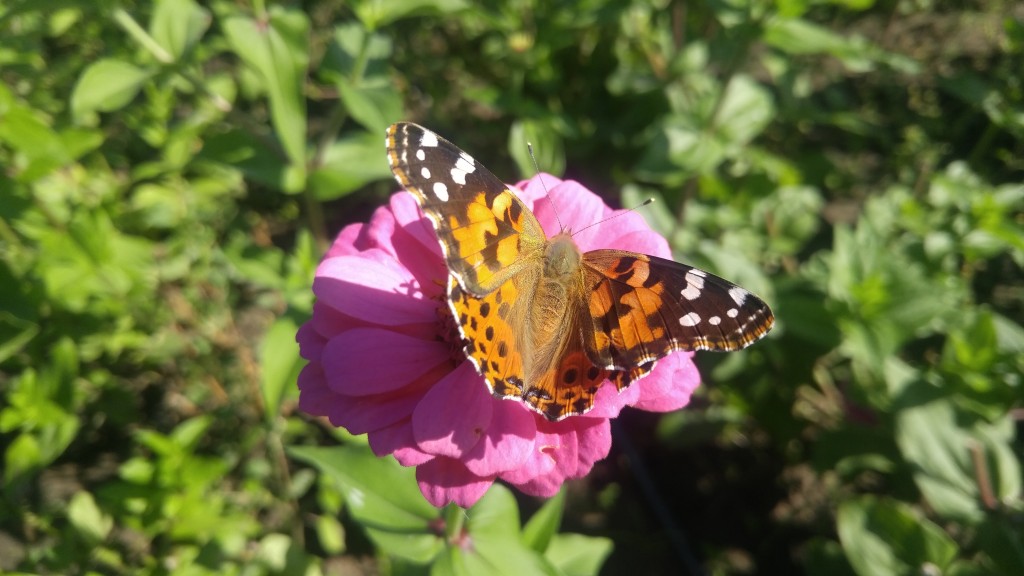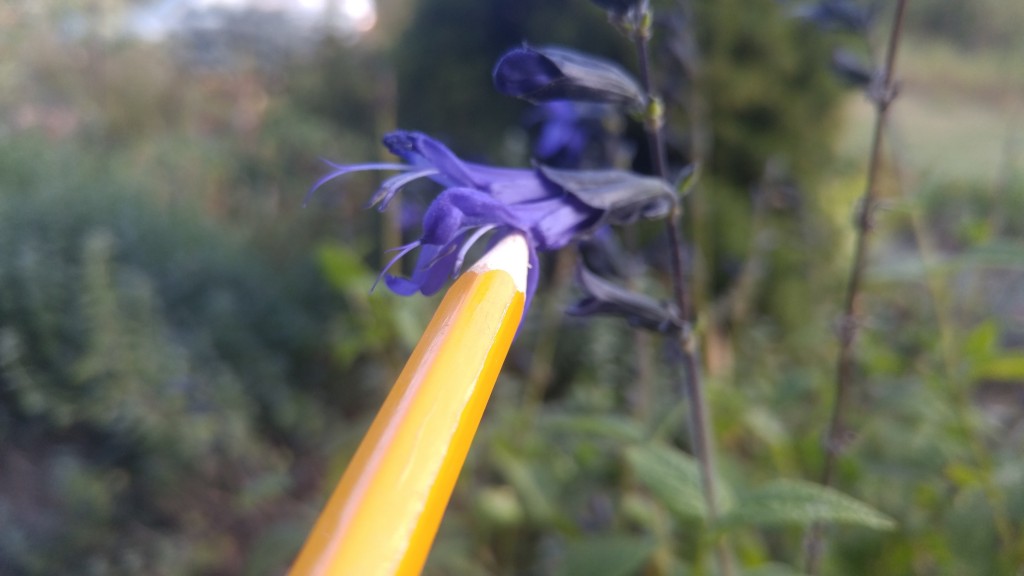Just about everyone knows what a monarch butterfly is and its amazing migration to and from Mexico. But not nearly as many people have even heard of a painted lady butterfly; until this year that is. Reports of painted lady butterflies seem to be all over the twittersphere. The most popular one I’ve seen is the weather radar in Colorado picking up a huge swarm of the migrating butterflies.
In a garden that I tend, I’ve been seeing lots of painted ladies during the past couple of weeks. Although there’s many more than normal, they’re not in radar-detecting numbers, that’s for sure. Since it is the middle of October, most of the plants in the garden are done for the season. There are however, a couple of hundred late-planted zinnias still going strong. That seems to enough to convince the butterflies to stop by the garden to tank-up on zinnia nectar before continuing their journey south. I’ve noticed there is a wide size variation in the ones I’ve been seeing, some are only less than three-quarters the size of the larger ones. Apparently, the larger insects had much better feeding conditions when they were caterpillars than did their smaller companions.
A quick search online shows not much is known about this species compared to the the intensely studied monarch. They’re still figuring out how they find their way south and what triggers them to migrate. Unlike the monarchs that take more than one generation to migrate, the painted ladies make the entire trip as a single adult. They’re often found in their southern range all beat up from the long flight, yet they still search out just the right plants on which to lay their eggs.
All round the country the same thing is happening: a large expansion of the painted lady butterfly population. Some scientists are so impressed by some of the reports that they are comparing this rare event to this summer’s total eclipse. If you don’t want to be left out of what is possibly a once in a lifetime occurrence, find a place that still has a few flowers in bloom and take part in some fun butterfly viewing. You probably won’t see clouds of painted lady butterflies around here but you certainly won’t have to look very hard to find them.
Bob

